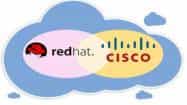Udemy Online Course Free Coupon Code
Intro To Cisco Aci & Red Hat Virtualization Integration
Intro to Cisco Application Centric Infrastructure (ACI) & Red Hat Virtualization (RHV) Integration – Free Course
What you’ll learn
- Be more knowledgeable about ACI
- Enhance the Cisco networking DC network skill set, by adding the state of the art Cisco ACI solution knowledge
- Lead high level technical and business discussions around the benefits and details of ACI fabric
- Possess a very good, high-level technical understanding of the ACI solution and its benefits to data center infrastructures
- Use of Red Hat Virtualization (RHI)
- Cisco ACI & Red Hat Virtualization Integration
Requirements
- A fair understanding of Layer 2 and Layer 3 technologies
- Basic computer skills
Description
Cisco ACI is the normal replacement for about 50-60% of the Data Center infrastructure globally, and with Cloud business and global revenues heating up, ACI skills will be highly valued by clients and vendors alike. Master ACI and Software Defined Networks (SDN) today with no delay.
This course is designed to teach you the skills you need to understand ACI fabric, its components , how they fit together, and how to configure it and deploy an ACI infrastructure.
It also teaches you how to use the Cisco ACI Application Programmable Infrastructure Controller (APIC) to configure the policy that gets rendered on the actual physical fabric switches and becomes the ACI Leaf and Spine switches’ configurations.
The course teach you how to :
- Configure Tenants, Contexts
- Configure Bridge Domains (BDs) and Bridge Domain Pervasive SVI Gateways
- Application Profile and End Point Groups (EPGs)
- Contracts, Subjects, and Filters to control communication between EPGs
- Map statically end points to an EPG
- Configure L2 Bridge and Routed outside connections to connect ACI Fabric to connect to external L2 and L3 networks
- Configure Routing Protocols (OSPF, BGP, EIGRP), and Static routing for ACI
- Configure the ACI as a transit routing domain
- Integrate ACI fabric with Virtualized Environments such as VMware vCenter and vShield
- Integrate ACI fabric with Microsoft SCVMM
- Add Service appliances and L4 to L7 services to ACI Fabric
- Configure Service Graphes to enable the use of L4 to L7 services for ACI tenants and end points
- Configure and advertise default routes out of the ACI fabric
Author(s): Charles Smith



